The method of selling one’s products via a third-party vendor is a consignment process and the terms & conditions of the process are known as the equipment consignment agreement. This agreement supports and secures the consignment process in and out thereby preventing any disagreeable situation in the business.
The equipment consignment agreement contains the information of the consignment or the sale of products. Besides the quintessential things, it also constitutes the details of the consignor(seller of the product), the consignee(buyer of the product or the third party), their terms and conditions, and the provisions they both agree on.
With the equipment consignment agreement, both the party stands in a mutual ground that inhibits any unnecessary claim to crop up in the middle of the business. Since the business is about purchase and sale, it holds the issues of payment, insurance, and the matter of the disposition of equipment, being so much engrossed in the consignment method, the equipment consignment agreement is the safe document to start with.
Table of Contents
What is the Equipment Consignment Agreement?
An equipment consignment agreement is a document crafted either by the consignee (the third party or the purchaser) or by the consignor (seller of the products) with an objective to build written compliance concerning the consignment process.
The equipment consignment agreement could also be defined as the contract between a consignor and consignee involving the purchase and sale of goods in which the consignee plays the role of a third-party and the consignor being the seller of the product agrees to remain the original owner of the product until they are traded. They maintain the right to the property until the consignee hands it over to the consumers or the final purchaser.
Equipment Consignment Agreement Template
Equipment Consignment Agreement Sample |
Equipment Consignment Agreement Form |
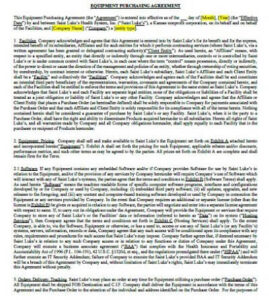 |
 |
| Download | Download |

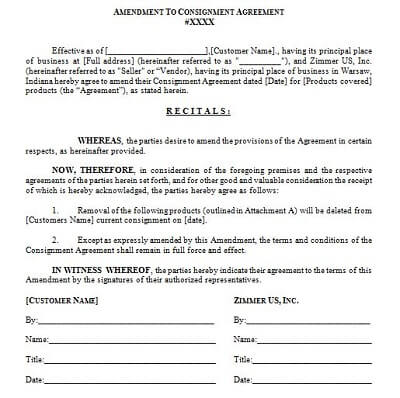
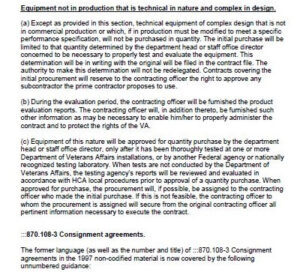 |
 |
| Download | Download |
What Should be Included in the Equipment Consignment Agreement Template?
Either you are the consignor or the consignee preparing the effect on the consignment agreement on behalf of the other make sure you incorporate these elements in the document to make it effective and functional:
- Title head.
- Consignor details.
- Consignee details.
- Equipment consigned.
- Details of the equipment.
- Price schedules.
- Disposition of equipment.
- Definition of consignment.
- Maintenance of title.
- Listing fee.
- Provision for sale of equipment.
- Terms for allocation of proceeds.
- Plan of payment to the customer on sale.
- Provision on financing the sale of equipment.
- Repairs and maintenance.
- Risk of loss or damage in transit.
- Warranties.
- Title transfer.
- Sales tax.
- Amendment.
- Insurance.
- Termination.
- Signature of the consignor.
- Signature of the consignee.
- Date.


 |
 |
| Download | Download |
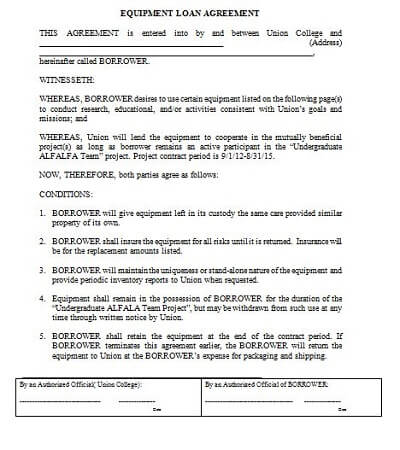
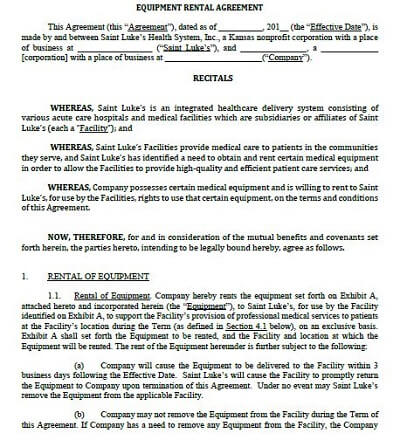
What is Consignment in Trade?
The consignment is a business process circulating between a consignor (the owner of the product or the one who sells) and the consignee (the buyer of the product). In this process, the consignor sells products like furniture, stationery, clothing, etc through a consignment store third party. The third party or the retailer sells the product to the consumers and pays back the money.
In the entire process, the consignor pays the third party just a portion to facilitate the sale. Even after handing over the goods to the consignee, the owner of the goods is not transferred. Till the goods in abandoned from the consignment store, the consignor remains to be the original owner of the goods. The standard process explains the consignor is obliged to take back the products if not sold by the consignee.
Due to different circumstances, the third-party seller or consignee fails to sell the consignment stock. It could be due to a decrease in demand, an increase in price, or other circumstantial causes. Considering the situations, and as per the written statement in the equipment consignment agreement, the consignment stock is legally owned by the consignor, being the consignee responsible for distribution and retail operation.
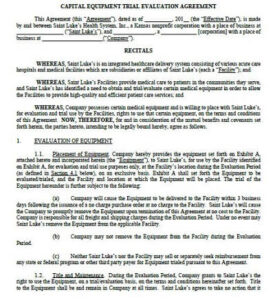 |
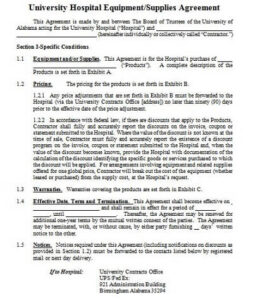 |
| Download | Download |
State the Characteristics of the Consignment Agreement.
In a consignment trade, there is exist some aspects of the business that needs to be learned before crafting one. So here is the list of features of a consignment :
a. In a consignment process, there exist two parties- the consignor(owner of the good) and the consignee (distributor or the good third party).
b. In the consignment business, more than one consignee is allowed to sell the product of a single consignor.
c. The relation between the consignor and the consignee is not similar to any buyer and seller.
d. The consignor is responsible to transfer the possession of goods to the retailer’s place. The consignment process allows the transfer of possession only but not ownership.
e. The consignor is held responsible for damage of goods and not the consignee.
f. The consignor is to pay the consignee a portion of the sale to facilitate the sale.
g. The consignor remains to be the stockholder or the owner of the goods unless the products are out from the consignment store.
h. Till the time, the product is delivered is in the consignment store the consignor has the right of possession, and once it is transferred to the consumer, the ownership automatically gets transferred.
i. Although the product is transferred to the consignee, the profit and loss of the business are at the risk of the consignor only.
Who Possesses the Good in the Consignment?
In the consignment process, the consignor consigning the products or goods to the consignee transferred the right of possession only. In actuality, the title of ownership remains with the consignor itself.
Therefore remember if you are getting the products supplied from your container it doesn’t make you liable for any profit or loss, neither makes you liable for any damage of goods in transit since as a consignee you are just in possession of the goods till the time it is in your consignment store but the actual owner of the product is the consignor only.
Once the product is distributed to the consumers or gets completely sold, the ownership transfer was to the consumer automatically till then the consignor retains the title of ownership.
What are the Kinds of Equipment Consignment Agreements?
The consignment agreement is generally divided into two categories:
- Exclusive.
- Non-exclusive.
1. Exclusive consignment agreement.
In this document, the contract of the deal is only between a single consignor and a single consignee. No other external parties are allowed to get access to the consignor product. This consignment process limits the consignee to a single individual only.
2. Non-exclusive consignment agreement.
The content of the non-exclusive consignment agreement extends the limitation from one consignee to multiple. In this non-conclusive consignment, two or more people are allowed to be the consignee of a single consignor and sell the items at the same time.
What are the Advantages of an Equipment Consignment Agreement?
By forming an equipment consignment agreement, you the consignor, and the consignee both agree to remain on a mutual agreement that helps prevent any unnecessary claim from both parties. The let’s see the benefit and the services the equipment consignment agreement renders:
- The consignment agreement is a legally binding contract that evidences the mutually agreed upon terms and conditions of both parties.
- The existence of the equipment consignment agreement clearly defines the pact or the treaty.
- It ensures the stability of the consignor and the consignee’s claim.
- An effective equipment consignment agreement format in word showcases the intricate details of the business making the process transparent.
- It distinctly outlines the responsibility and charge of the consignor and consignee.
- The equipment consignment agreement help define the scope and the objectives of the business.
- The agreement, legally binding by law, clearly states the ownership title.
- The equipment consignment contract helps define the listing fee, the financing of the sale of equipment, provisions of risk of damage, and represents the warranties as well.
- Furthermore, it contains the description of the insurance, amendment, tax, termination provision, and the terms and conditions that help in the reduction of risk.
There are a lot more as far as the benefits of the equipment consignment agreement are concerned, but it is equally essential for us to take a look at the downfall it has.
What are the Disadvantages of Consignment?
The benefit of any activity is backed with its downfall as well. Observing and keeping note of the possible downfall warns the consignor and consignee from making any further mistakes.
- The method of consignment excludes the consignor from enjoying the full profit of the merchandise since a third party for the second vendor is associated in the line.
- More than the consignor the consignee is the one holding nearly 60% of the profit of sale on each item.
- It disrupts the maintenance of cash flow since the sale of products is uncertain.
- The consignment agreement once built is not subjected to negotiation or adjustments making it solidified.
Being aware of the pros and cons of the consignment agreement template would help you know the chances of making mistakes and also let you know of the advantages you can earn from the same.
How to Craft the Equipment Consignment Agreement?
The crafting process of the consignment agreement must be dealt with focus and care as a single phrase that has dual meaning could change the terms. Therefore, be careful while incorporating the provisions, terms, and conditions of the contract. Follow these steps one after the other to achieve an effective and accurate equipment consignment agreement.
1. Communicate with the party.
If you want the consignor then before penning down the provisions in the equipment consignment agreement discuss it with your consignee in detail. Each guarantee and obligation that you feel to be in the business must be discussed with your consignee and if they agree on your statement only then it could be included in the agreement or else it is not viable to incorporate the same.
Arrange a meeting and discuss in detail the business. Talk about the equipment and the services you are planning to distribute to the consignee.
If you are the consignee, follow the same procedure and discuss your provisions with your consignor. Remember only the provisions and statements that are mutually agreed upon by both the consignor and the consignee go into the equipment consignment agreement.
2. Begin the document.
The equipment consignment contract must always begin with the title held at the top of the document. Use block and bold letters to write the heading.
Right below the document mention the name of the consignor along with its details. It should include the full name of the consignor or the owner, address, state, city, zip code, phone number, and email ID.
On a similar note, include the name of the consignee along with its details. Since it is the consignee make sure to include the consignment number as well.
3. Equipment detail.
Below the consignee and consignor information incorporate the details of the equipment consigned.
Mention the name of the product and its model number. Add in the serial number, product description, hour meter, and year.
4. Include the price schedule and the liens.
5. Consignment detail.
After listing the essential information above, line down the basic provisions of the document.
Include the following details:
a. Define the consignment.
b. State the provisions concerning the title. Clearly define if the title would be retained, or in what case it would be transferred to the consignee.
c. State the listing fee that would be incurred when delivered the equipment to the consignee.
d. Write the terms and conditions concerning the sale of equipment, allocation of receipts, and payments to customer account sale.
e. Affirm the conditions concerning the sale of equipment, who will be paying for the sale, or otherwise.
f. State who will be responsible for the delivery repairs and maintenance.
g. Mention the individual to hold responsible in case of damage in transit or loss on the sale.
h. Discuss the warranty, the transfer of title, the sales tax, the amendment, the insurance the termination, and other additional notices.
6. Signatures.
Conclude the document by placing the block for the signatures of both the consignor and consignee.
The listing of the contents of the equipment consignment template once done, proofread. A single error could bring up legal issues that would bring both parties into trouble.
If you have any DMCA issues on this post, please contact us!
